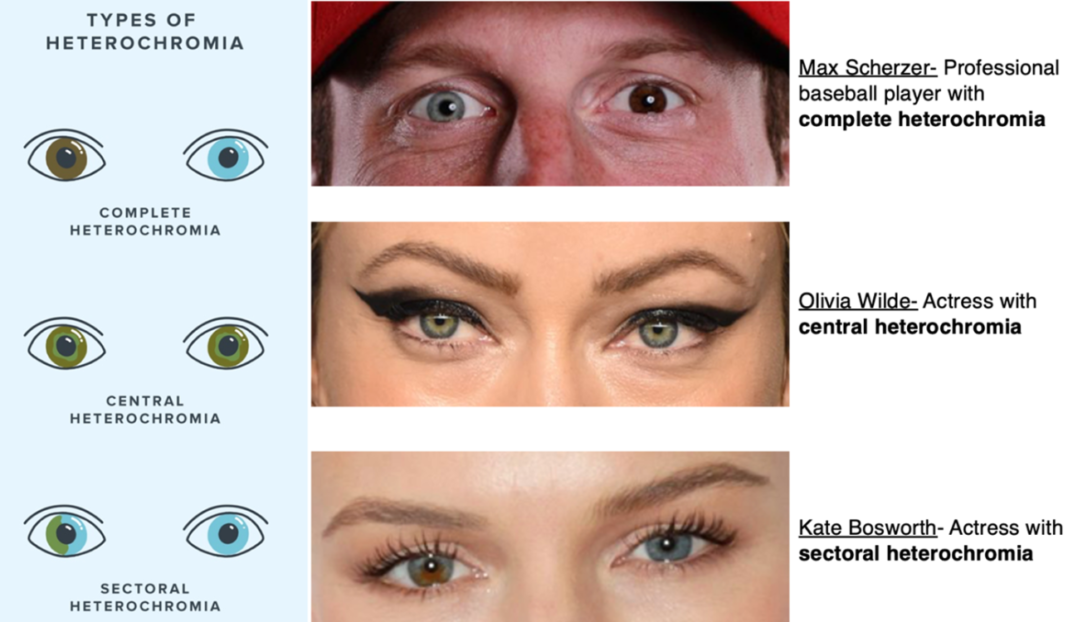BOURSESSENEGAL – Central heterochromia is a unique and intriguing condition characterized by two different colors in the eyes, specifically within the central part surrounding the pupil. This fascinating phenomenon captures the attention of many, leaving them curious about its causes, implications, and how it affects individuals. In this comprehensive guide, we’ll explore central in depth, discussing its characteristics, potential causes, and how to embrace this distinctive trait.
What is Central Heterochromia?
Central heterochromia refers to a condition where the irises of an individual’s eyes display different colors. More specifically, it occurs when the inner ring around the pupil differs in color from the outer part of the iris. For example, one eye might have a green inner ring and a brown outer part, while the other eye might display a blue inner ring surrounded by brown.
Types of Heterochromia
Heterochromia can be categorized into two main types:
- Complete Heterochromia: Each eye has a completely different color. For example, one eye may be blue while the other is brown.
- Partial Heterochromia: A single eye has two different colors, often manifesting as a color difference between the inner and outer parts of the iris.
Central heterochromia specifically falls under the partial category, making it a distinctive and visually striking trait.
Causes of Central Heterochromia
Understanding the underlying causes of central heterochromia helps in appreciating its significance. While some people have this trait naturally without any associated health concerns, others may experience it due to specific conditions.
Genetic Factors
Many individuals with central inherit this condition from their parents. Genetic variations influence the distribution of melanin, the pigment responsible for eye color. For those with a family history of heterochromia, it’s not unusual to find similar traits among relatives.
Medical Conditions
In some cases, central heterochromia may signal an underlying medical condition. These conditions may include:
- Waardenburg Syndrome: A genetic disorder characterized by changes in pigmentation, including hair, skin, and eye color.
- Horner’s Syndrome: This condition affects the nerves that control the eye and can lead to changes in pupil size and color.
- Fuchs’ Heterochromic Iridocyclitis: An eye condition that causes inflammation and can result in changes in iris color.
Trauma or Injury
Injuries to the eye can lead to changes in pigmentation, potentially resulting in central. This can occur from accidents, surgical procedures, or even infections.
Symptoms and Characteristics
While central heterochromia itself is a visual trait, it can sometimes accompany other symptoms depending on its cause. Recognizing these characteristics helps individuals understand their condition better.
Visual Appearance
The most notable characteristic of central heterochromia is the striking difference in eye color. The inner ring around the pupil will typically appear in a color that contrasts with the rest of the iris. This contrast can range from subtle to dramatic, depending on the individual.
Associated Symptoms
If central heterochromia arises from an underlying medical condition, other symptoms may be present. These could include:
- Vision Changes: Blurred vision or sensitivity to light.
- Eye Discomfort: Irritation, redness, or swelling.
- Pupil Size Variation: A difference in the size of the pupils.
If you notice any of these symptoms along with central , it’s essential to consult a healthcare professional.
Embracing Central Heterochromia
Living with central heterochromia can be a unique experience. Many individuals celebrate their distinct eye colors as a reflection of their individuality. Here are some tips on how to embrace and care for your beautiful eyes.
1. Proper Eye Care
Taking care of your eyes is crucial, regardless of whether you have central . Here are some essential tips:
- Regular Eye Check-Ups: Schedule routine visits with an eye care specialist to monitor your eye health.
- Protective Eyewear: Use sunglasses to shield your eyes from UV rays, which can harm your vision.
2. Highlighting Eye Color
If you want to emphasize your central , consider using makeup to accentuate your unique eye colors. Here are a few suggestions:
- Eyeshadow: Use complementary shades that enhance the colors in your eyes.
- Eyeliner: Experiment with colored eyeliners to draw attention to your irises.
3. Share Your Story
Many people find it empowering to share their experiences with central . Engaging in conversations about your unique trait can help raise awareness and appreciation for diverse physical characteristics.
Frequently Asked Questions About Central Heterochromia
Is central heterochromia common?
Central is relatively rare compared to other types of heterochromia. However, it can occur in people of all ages and backgrounds.
Can central heterochromia develop later in life?
Yes, central can develop later in life, especially if it results from an injury, medical condition, or changes in pigmentation.
Does central heterochromia affect vision?
In most cases, central does not affect vision. However, if it is associated with a medical condition, there may be additional symptoms that impact vision.
Can I wear contact lenses if I have central heterochromia?
Yes, many individuals with central wear contact lenses. You can choose colored lenses to enhance or change the appearance of your eye color.
Should I see a doctor about my central heterochromia?
If your central is not accompanied by other symptoms, it typically does not require medical attention. However, if you notice any changes in your vision or eye comfort, consult a healthcare professional.
Conclusion: Celebrating Your Unique Eyes
Central heterochromia is not just a physical trait; it’s a reflection of individuality and diversity. Understanding its causes, recognizing its characteristics, and caring for your eyes can enhance your appreciation of this unique feature. Whether you embrace your central as a part of your identity or view it as a conversation starter, remember that your unique eyes make you who you are. Celebrate your differences, and let your eyes shine
REFERENCE : https://www.health.com/



